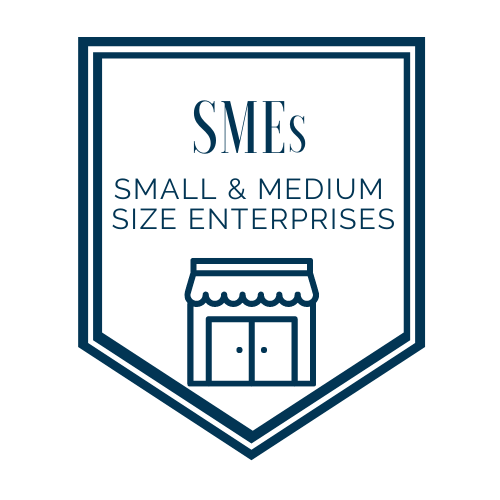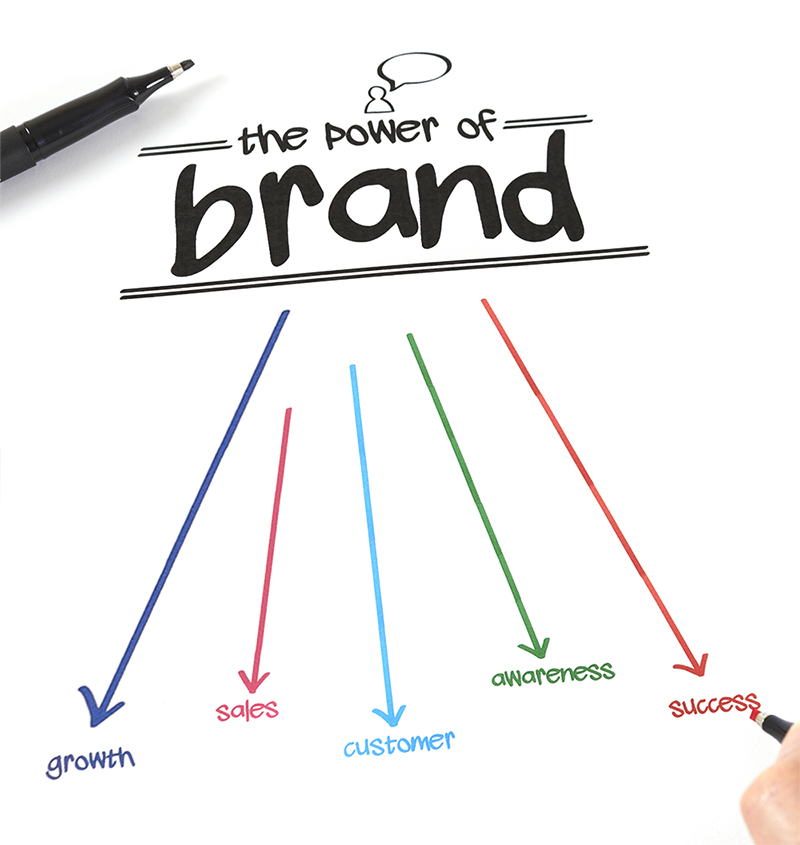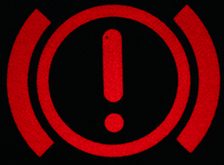
Intellectual Property Protection
1.1
THE BASICS OF A TRADEMARK
1.2
COUNTERFEITERS: YOUR UNSEEN COMPETITORS
1.1: THE BASICS OF TRADEMARKS
What is a trademark?
The United States Patent and Trademark Office (USPTO) defines a trademark as:

any word, phrase, symbol, design, or a combination of these things that identifies your goods or services. It’s how customers recognize you in the marketplace and distinguish you from your competitors. The word “trademark” can refer to both trademarks and service marks. A trademark is used for goods, while a service mark is used for services.
A trademark is used by a person to “identify and distinguish his or her goods.”1 It identifies the source of the goods and sets them apart from other goods on the market.2 Since a trademark’s purpose is to distinguish a company’s goods from another’s products, the trademark needs to be unique.3 Consumers will use the unique marks to identify the company’s goods when making purchases.
Standard Character Trademarks
Standard character trademarks have no specific font, stylization, color or design. As the label indicates, the trademark is composed of standard characters that do not have any specific design characteristics. Developing a standard character trademark allows you to protect the combination of letters, words, or number that compose your trademark irrespective of how it is presented.
Special Form Trademarks
Special form trademarks do have a specific stylization, design, color, etc. that is important to the trademark. They still used letters, words, or numbers but the trademark rights protect the specific way in which you want the trademark displayed.
Strong vs. Weak Trademarks
Your trademark is used to distinguish your products from other similar offerings in the marketplace. Accordingly, you should seek to develop the most distinctive trademark as you can. It should clearly identify your company as the source of the product, providing consumers an easy way to find your goods amongst a sea of competitors. The strongest trademarks are inherently distinctive, whereas weak trademarks are general in nature or non-descript. Weak trademarks are difficult to protect because it can be hard to argue that the mark clearly identifies your unique product in a way that is distinctive from other marks. Strong trademarks not only help to ensure that consumers are able to easily identify your products, but they also help to ensure that you have standing to challenge the unauthorized use of your trademarks by others.
Categories of Distinctiveness
To determine whether a trademark is strong or weak, you should consider how it aligns with one of the four categorizations of trademark distinctiveness. Courts and the USPTO sort words, logos and marks into one of four categories of distinctiveness: 1) fanciful, 2) suggestive, 3) descriptive and 4) generic.
Fanciful and suggestive marks are considered inherently distinctive. This means that these marks will be accepted by the USPTO and the business or individual that first applies for registration will be afforded trademark rights.
The difference between suggestive and descriptive marks is that suggestive marks require imagination to determine the nature or quality of the goods, whereas descriptive marks allow someone to draw those conclusions without much effort. Descriptive marks are therefore not inherently distinctive, but they may become a mark that is eligible for trademark protection by attaining secondary meaning. Secondary meaning is a showing that the term or mark reminds the consuming public of the producer, not of the product generally. Secondary meaning is achieved through the continued use of a descriptive mark. Further, after a mark has been used continuously for five years, the mark’s owner may obtain “incontestable” status for the mark and will no longer be subject to challenges on the grounds that it lacks secondary meaning.
The scope of protection against other marks will depend on a mark’s distinctiveness and its strength in the marketplace. As a general rule we suggest avoiding generic marks as they are difficult to enforce under United States trademark law.
Common Law Trademark Rights
Developing a trademark and using it in commerce without registering the mark gives you what are called “common law rights”.4 5 Common law trademark rights can be useful in preventing competing businesses in a close geographic area from using identical or similar marks that could confuse customers.6 However, common law trademark rights are very limited and tend to be enforced only within the areas where the intellectual property is being directly marketed and sold.7 The Internet and e-commerce have greatly expanded the marketplace for many SMEs; yet, it does not automatically increase the geographic area in which you are operating. If you only plan for your business to operate within a small geographic area and you have no desire to grow outside of that small geographic area, then the common law rights approach may be all that you need. However, for most businesses this form of trademark protection will fall well short of what is needed. Given the expanding role of e-commerce, we do not recommend that any firm rely solely upon this option.
USPTO
The United States Patent and Trademark Office (USPTO) is an excellent resource for any business looking to learn more about trademark rights, to register their marks, and for ways to protect their trademarks and other intellectual property. We suggest that you spend some time on the USPTO’s website to get a good overview of trademarks, filing for trademark rights, and other information related to the protection of your marks. Later in this guide you will find a step-by-step process that will walk you through trademark registration with the USPTO.
Trademarks as Intellectual Property
Trademarks are just one form of intellectual property (IP) that can afford your business significant advantages. The IP that you develop as part of your business becomes an asset that, if properly utilized, can add substantial value to your business. In the past, intellectual property rights protections were used primarily to create barriers to market entry, thereby excluding emerging businesses and competitors from entering the marketplace.8 Today, such protections can represent more of a benefit for firms that might otherwise miss out on opportunities to improve their bottom lines by entering new markets and creating new revenue streams.9
For example, licensing or franchising is an attractive method to meet market demands that are difficult to take advantage of given constraints on your time, people and resources. Without appropriate protections over your intellectual property (such as copyrights, patents and trademarks), you may find only short-term benefits from activities that can be effective in generating stable, consistent streams of income.
What is Intellectual Property (IP) and What are Intellectual Property Rights (IPR)?
Think of it this way: any product that you create or invent, whether that product has become a reality yet or not, is an important piece of IP that is deserving of protection. The brands and trademarks that you attach to those products are also deserving of protection because they are a representation of your investment in the business. Without your brand, where might your business be?
Why Your Intellectual Property is Worthy of Protection
You have put considerable time and effort into developing your product offerings, marketing strategy, and customer base. To support your operations, you have hired excellent employees and developed efficient organizational processes. To protect your business, you purchased insurance to cover you, your directors, assets and property, and you have ensured the physical security of your buildings, property and products. You may even be on the cutting edges of protecting your company from cyberattacks and hackers who would try to do your business harm. But what have you done to protect your IP? How will you protect this asset from harm?
Whether you are in the early stages of forming your business or if you have been operating for a decade or more, you should consider how you will protect your investment in your IP. This includes making sure that you understand your IPR and take steps to preserve and defend them. Any company that sells a product under its unique brand name must understand the need to protect their trademarks from infringement and misuse.
The Value of Your IP to Investors

The importance of IP protections should not be lost on emerging businesses as the solidification of these rights can be highly valuable to a business even before its products officially hit the market. According to the Berkeley Patent Survey conducted in 2010, investors want to see emerging firms use intellectual property protections because it shows initiative and commitment.10 In fact, more than 67% of companies receiving money from outside investors reported that IP protection was seen by their funding sources as an essential to the company’s success.11
We believe that it is crucial for startups and other businesses seeking outside investment to communicate the importance of obtaining and maintaining intellectual property rights protections to potential investors. This could even include communicating the value of IP protections to banks and other lending institutions. IPR help protect your business from theft by other people and companies, knowingly or unknowingly, which could lead to civil infractions of your rights or sometimes even criminal activity, but also it protects the investment that investors have made in your business.
Your investors should know that this requires resources that are needed over and above investments made in direct support of your product or operations. Take advantage of the fact that this part of their investment can be very easy to quantify in a conversation about the value of IP protections – if your product is a hit and your investors do not invest in IP protections their entire investment takes on an additional level of risk. The presence of counterfeiters in the market and their targeting of SMEs and vulnerable businesses is irrefutable. Spending a little bit of money on protection can go a long way. Furthermore, developing prevention strategies is much more cost effective than reactively fighting against counterfeits that are already in the market, particularly if legal action is required.
Beyond its value to your business, and potentially to your investors, IP protections are highly important to your customers. In this case of trademarks, this is very important to consumers, because a trademark tells the customer the origin of the product. Consumers tend to associate quality and legitimacy with recognizable logos and trademarks. These symbols, as well as brand names they trust, help a consumer to distinguish desired goods from similarly placed products, as well as to set legitimate products apart from an ever more crowded field of imposters and cheap copies, which are called trademark or product counterfeits.12
1.2: COUNTERFEITERS: YOUR UNSEEN COMPETITORS
As the success of your products creates greater consumer demand your exposure to counterfeiting risk will grow. If consumers are unable to reliably differentiate your legitimate products from counterfeits, they cannot make informed choices and counterfeiters are more likely to take advantage of them. Do not assume that strong customer loyalty is a protection against counterfeiters! Unless your consumers are able to tell real from fake, strong brand loyalty can be turned against you as counterfeiters use your brand’s reputation to sell their phony goods.
WHAT IS PRODUCT COUNTERFIETING?
Product (or trademark counterfeiting) is the unauthorized use of another’s trademark (or a ‘spurious mark) either affixed to the product or some type of packaging and then sold.
In terms of the law, product counterfeiting is a violation of trademark rights. Each country has a specific definition of counterfeiting but in general the laws are designed to prevent unauthorized use of a trademark. Counterfeiting is a massive global problem that has become an industry unto itself, posing significant threats to any business that relies upon the good name and reputation of their brand.13 The scale to which a business is impacted depends upon consumer demand for their products, the volume of counterfeits that flood the market and the extent to which counterfeits replace your legitimate products in consumers’ shopping carts. Yet, a study of the impact of counterfeiting on SMEs located in Europe found that 3 out of 4 firms saw a drop in revenue and had to cut jobs because of counterfeit products.14
If your business is targeted by counterfeiters, the best-case scenario is that you will notice no negative effects: your revenues will not be affected, consumers will not be harmed by fake products, and you will see no declines in market share. However, this situation is unlikely should you become the victim of product counterfeiting. The more realistic probability is that counterfeiting activities will be a direct cause of losses in sales and revenue, declines in market share, increased costs due to facilitating the return and replacement of fake products that are believed to be yours, damage to your brand and reputation, or harm to your customers.

Left unaddressed, counterfeit products can damage your brand and your business in other important ways. Most troubling is that a failure to protect your trademarks and engage in effective brand protection efforts may give your customers the impression that you have failed to protect them from potential harm. When consumers feel that companies have placed profits over their protection, there is a noticeable loss of goodwill, which can have dramatic effects on the stability of your revenue streams and market share.15 Because counterfeiters seek out brands that have strong customer followings, their illegal activities can undermine the foundations that you are attempting to build between your business and consumers. This directly affects your most vital revenue streams and potential for future growth.16 17
Because counterfeiters are drawn to products that are in high demand within the marketplace, the more successful your product becomes the more likely it will be counterfeited. This means that you are not only competing for customers against other legitimate firms who have an alternative product offering, you are also competing against counterfeiters who are selling a product that looks just like yours. Counterfeiters are your competitors in the marketplace, yet because they operate behind a criminal screen, they are often an unseen or at times an unacknowledged competitor.18
It is difficult for businesses to determine the volume of counterfeit products in the market, when counterfeits enter the market, or how often they take sales away from you – remember, counterfeiters don’t publish production numbers! Because of this, it can be hard to know just what your current level of exposure is and how best you should respond.
The chart below describes in a general manner the relationship between legitimate products and counterfeit products in the market across four of the five exposure categories. The first category, Pre-entry, is not shown on the chart because it describes products that have yet to come to market. While it is sometimes the case that counterfeits can be found in the marketplace before legitimate goods are produced, this tends to be rare. At the Pre-entry stage, it is unlikely that counterfeit products exist, yet the need to address the threat of counterfeiting is still essential. Importantly, taking action at this stage can substantially reduce the amount of resources expended on brand protection activities once a product has entered the market. Start-ups, emerging businesses, and companies launching a newly developed offering can usually place their products into this category. Brand protection strategies at this stage are proactive in nature, looking to mitigate risks before they develop, and address general threats raised by counterfeits.
The remainder of the categories, as indicated by the chart, outline the potential progression of impacts due to counterfeiting that can happen over time given no brand protection activities are undertaken. These categories can also be a useful way to sort your perceived counterfeiting risk when determining how best to formulate a brand protection strategy.

At the Entry stage counterfeit products are just introduced into the marketplace and they tend to trail behind the legitimate item in terms of volume in the marketplace, as well as share of the market. Left unabated, the growth of counterfeit goods pushes the problem to the next stage, Serious, where there is a noticeable impact on the brand in the form of lost sales, revenue or market share. It is also in this stage that companies may experience a tipping point – counterfeit products begin to outnumber or have greater demand relative to the legitimate product. Many companies will remain in the Serious category, as market demands and consumer needs affect demand for the product. However, in some cases, counterfeit goods balloon to the point where the situation becomes Critical. At this stage, counterfeit goods have wholly overtaken legitimate goods, in terms of numbers, sales, or market share. Companies that reach the Critical stage will see substantial declines in revenue, the number of goods sold, and market share. These declines may be concentrated within a specific geographic market, industry or customer base. If counterfeit goods effectively displace legitimate products and consumers begin to have trouble with product performance, your brand’s reputation will suffer. At the Fatal stage, counterfeits have overtaken the legitimate product, consumers’ views of your brand have declined, and demand for the product begins to erode. As a result, the number of both legitimate and counterfeit goods begins to decline as consumers give their business – and loyalty – to other brands. It is very difficult to recover from this situation.
E-Commerce, Social Commerce, Counterfeiters, and Your Business

The rise of e-commerce has undoubtedly assisted many small businesses with reaching markets that otherwise would have been inaccessible. E-commerce has also created an environment where counterfeiters are able to operate more freely and publicly.19 Further, it provides counterfeiters with more immediate access to even the smallest brands.20 Large global e-commerce sites like the Alibaba Group domains (alibaba.com, aliexpress.com, taobao.com, tmall.com, and 1688.com), Amazon, DHGate, Wish.com, eBay and others encourage competition among product sellers. Consumers tend to be driven to purchase products based upon price, and many e-commerce sites use sophisticated algorithms to give preference to product offerings that have the lowest price. This practice has led several e-commerce sites to be accused of damaging small businesses as counterfeiters operating on these sites can undercut legitimate brands.21
For example, an entrepreneur that uses large e-commerce platforms to sell his invention, a teeth-whitening powder, was forced to sell his product at a lower price, leading to substantially reduced revenue, just so that he could ensure that consumers selected his genuine product over low-priced counterfeits.22 Designers of custom-made and creative products who sell their work through e-commerce websites that highlight creative works are also seeing copies of their products pop up at alarming rates.23
For small businesses in today’s environment, it may be very difficult to avoid having an online retail presence. The ability to reach new customers and markets, as well as the need to remain competitive in the marketplace necessitates that nearly all businesses have a web-based presence, with many having some form of e-commerce option available. Yet, even when businesses choose not to sell their products through e-commerce channels there is no guarantee that they are safe from counterfeiters.
Disclaimer: The intent of this guide is a tool and should not be considered legal advice.

